-
 Bitcoin
Bitcoin $82,373.1936
-1.75% -
 Ethereum
Ethereum $1,814.2946
-3.18% -
 Tether USDt
Tether USDt $0.9998
0.04% -
 XRP
XRP $2.1169
-2.99% -
 BNB
BNB $601.0118
-3.74% -
 Solana
Solana $124.9376
-3.34% -
 USDC
USDC $1.0000
0.00% -
 Dogecoin
Dogecoin $0.1684
-6.49% -
 Cardano
Cardano $0.6686
-3.87% -
 TRON
TRON $0.2338
0.58% -
 Toncoin
Toncoin $3.7272
-2.40% -
 Chainlink
Chainlink $13.5113
-3.94% -
 UNUS SED LEO
UNUS SED LEO $9.5661
-1.46% -
 Avalanche
Avalanche $19.8503
0.00% -
 Stellar
Stellar $0.2644
-2.50% -
 Shiba Inu
Shiba Inu $0.0...01258
-4.21% -
 Sui
Sui $2.2800
-9.60% -
 Hedera
Hedera $0.1693
-6.37% -
 Litecoin
Litecoin $85.3541
-1.44% -
 Polkadot
Polkadot $4.0630
-5.15% -
 MANTRA
MANTRA $6.2456
-0.95% -
 Bitcoin Cash
Bitcoin Cash $302.2056
-1.17% -
 Bitget Token
Bitget Token $4.6101
-4.23% -
 Pi
Pi $0.8011
-2.78% -
 Dai
Dai $0.9999
0.02% -
 Ethena USDe
Ethena USDe $0.9995
0.07% -
 Hyperliquid
Hyperliquid $12.6347
-6.11% -
 Monero
Monero $213.9226
-1.12% -
 Uniswap
Uniswap $5.9372
-2.67% -
 Aptos
Aptos $5.2175
-5.99%
What is the transfer fee of USDT?
USDT transfer fees vary greatly depending on the network (e.g., Ethereum, TRON, Omni), with additional fees from exchanges and wallets. Network congestion and transaction speed also impact the final cost.
Mar 23, 2025 at 02:14 am
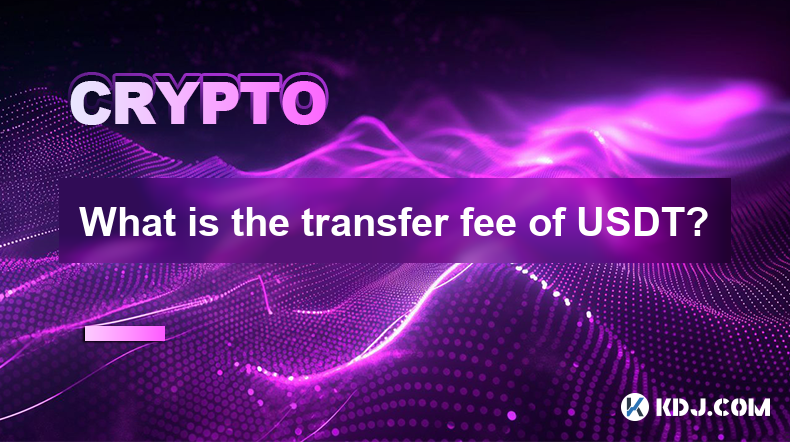
Key Points:
- USDT transfer fees vary significantly depending on the network used (e.g., Ethereum, TRON, Omni).
- Fees are typically denominated in the native cryptocurrency of the chosen network (e.g., ETH, TRX, BTC).
- Several factors influence the exact fee, including network congestion and the chosen transaction speed.
- Exchanges and wallets often add their own fees on top of the network fees.
- Understanding these fee structures is crucial for cost-effective USDT transfers.
What is the transfer fee of USDT?
The cost of transferring Tether (USDT) isn't a fixed amount. It fluctuates based on several crucial factors, primarily the blockchain network used for the transaction. USDT exists on multiple blockchains, each with its own fee structure. The most common networks include Ethereum (ERC-20), TRON (TRC-20), and Omni (on Bitcoin). Each network has different transaction costs and speeds.
Network Fees:
- Ethereum (ERC-20): Ethereum's gas fees, which are paid in ETH, are notorious for their volatility. High network activity leads to significantly higher gas fees. This means transferring USDT via ERC-20 can be expensive, especially during periods of intense network congestion. The fee is dynamic and changes constantly.
- TRON (TRC-20): TRON generally offers much lower transaction fees compared to Ethereum. Fees are paid in TRX, and they tend to be significantly more stable and predictable than Ethereum's gas fees. This makes TRC-20 USDT transfers a more budget-friendly option.
- Omni (on Bitcoin): USDT on the Omni Layer uses the Bitcoin blockchain. Fees are paid in Bitcoin (BTC) and are typically moderate, falling somewhere between TRON and Ethereum in terms of cost. However, Bitcoin transaction confirmation times can be slower than TRON or even Ethereum, depending on network conditions.
Factors Affecting USDT Transfer Fees:
Beyond the base network fees, several additional factors can influence the final cost:
- Network Congestion: High network traffic increases demand for block space, driving up transaction fees across all networks. This is particularly true for Ethereum.
- Transaction Speed: Users can often choose a faster transaction speed, which typically results in higher fees. Slower transactions usually mean lower fees. This is a common trade-off across all networks.
- Exchange/Wallet Fees: Many cryptocurrency exchanges and wallets add their own fees on top of the network fees. These fees can vary widely depending on the platform. Always check the fee structure before initiating a transfer.
- Transaction Size: While less significant for USDT transfers than for some other cryptocurrencies, exceptionally large transactions might incur slightly higher fees.
Step-by-Step Guide to Understanding USDT Transfer Fees (Illustrative Example):
Let's say you're transferring USDT from one exchange to another.
- Step 1: Choose your network: Decide whether to use ERC-20, TRC-20, or Omni. Consider the fee structure and transaction speed of each.
- Step 2: Check the exchange's fee structure: Before initiating the transfer, check your sending and receiving exchange's fee schedules. They might charge a percentage-based fee or a flat fee.
- Step 3: Observe current network fees: Many exchanges and wallets display estimated network fees before you confirm the transaction. Pay close attention to these estimates.
- Step 4: Confirm the transaction: Once you've reviewed all fees, confirm the transfer. The actual fee might vary slightly from the estimate due to fluctuating network conditions.
Common Questions:
Q: Which network is cheapest for USDT transfers?
A: Generally, TRON (TRC-20) offers the lowest transaction fees. However, this can vary depending on network congestion at the time of the transaction.
Q: Are there any hidden fees when transferring USDT?
A: While the network fees are usually transparent, exchanges and wallets may add their own fees. Always check the fee structure before transferring.
Q: How can I minimize USDT transfer fees?
A: Choose the TRC-20 network when possible, transfer during periods of low network congestion, and select slower transaction speeds (if available) to reduce fees.
Q: What happens if I don't have enough cryptocurrency to cover the network fees?
A: Your transaction will fail. Ensure you have sufficient funds in your chosen network's cryptocurrency (ETH, TRX, or BTC) to cover both the network fees and any potential exchange/wallet fees.
Q: Can I predict the exact USDT transfer fee beforehand?
A: No, the exact fee is difficult to predict with complete accuracy due to the dynamic nature of network fees. However, estimates are usually provided before you confirm the transaction.
Disclaimer:info@kdj.com
The information provided is not trading advice. kdj.com does not assume any responsibility for any investments made based on the information provided in this article. Cryptocurrencies are highly volatile and it is highly recommended that you invest with caution after thorough research!
If you believe that the content used on this website infringes your copyright, please contact us immediately (info@kdj.com) and we will delete it promptly.
- Top 9 Crypto Gainers Today – 29.03.2025
- 2025-03-30 03:00:12
- XRP Struggles to Gain Momentum Despite Legal Victory and ETF Speculation
- 2025-03-30 03:00:12
- Crypto Whale Bags Millions of Dollars Worth of ETH Amid the Bearish Market Sentiment
- 2025-03-30 02:55:12
- PEPE whale bets big on AAVE, accumulating $2.18M worth of the asset
- 2025-03-30 02:55:12
- Bitcoin (BTC) Price Drops 7%, Liquidating $158M in Longs
- 2025-03-30 02:50:12
- 3 Tokens That Could Shake Up the Crypto Market This Year
- 2025-03-30 02:50:12
Related knowledge
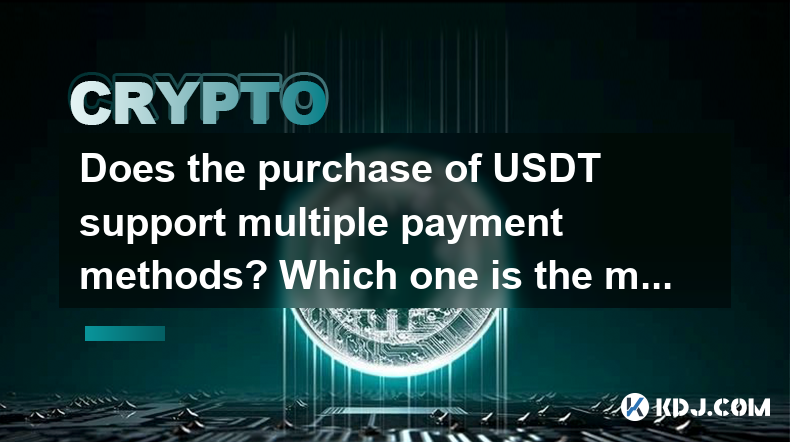
Does the purchase of USDT support multiple payment methods? Which one is the most cost-effective?
Mar 28,2025 at 04:56pm
Exploring USDT Purchase Options and CostsThe purchase of Tether (USDT), a popular stablecoin pegged to the US dollar, offers various payment methods, each with its own associated costs and benefits. The availability of specific methods depends heavily on the exchange or platform you choose. There's no single 'best' method, as cost-effectiveness is rela...
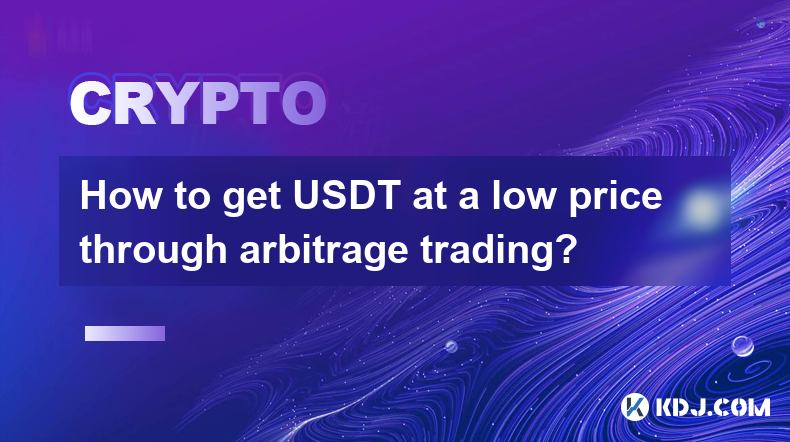
How to get USDT at a low price through arbitrage trading?
Mar 27,2025 at 08:14pm
Understanding Arbitrage Trading for USDTArbitrage trading exploits price discrepancies of the same asset across different exchanges. In the context of USDT (Tether), this means buying USDT on one exchange where it's cheaper and selling it on another where it's more expensive, profiting from the difference. This requires speed, efficiency, and access to...
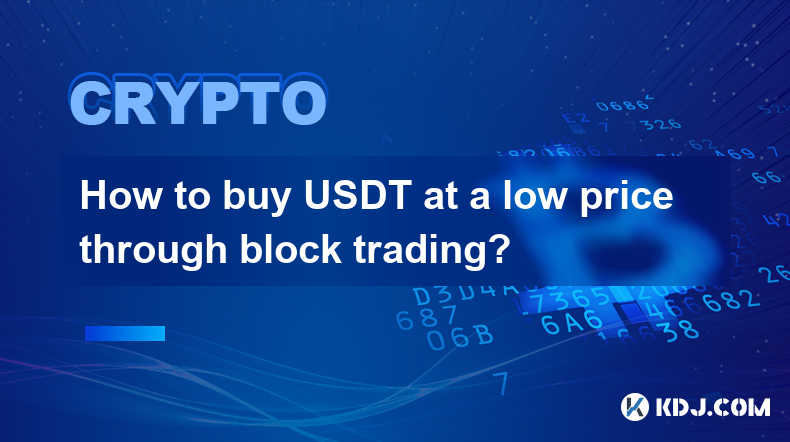
How to buy USDT at a low price through block trading?
Mar 28,2025 at 03:09am
Understanding Block Trading and USDTBlock trading, in the context of cryptocurrencies, refers to the purchase or sale of a large quantity of a digital asset in a single transaction. This contrasts with smaller, individual trades executed on public order books. USDT, or Tether, is a stablecoin pegged to the US dollar, aiming for a 1:1 ratio. Buying USDT...
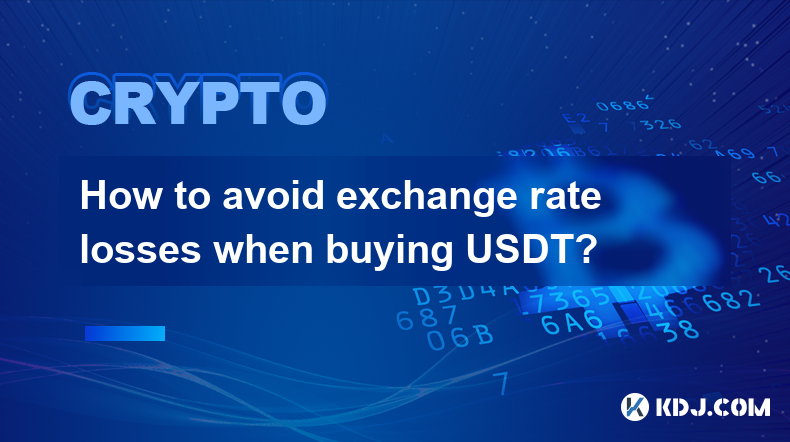
How to avoid exchange rate losses when buying USDT?
Mar 28,2025 at 07:43pm
Understanding USDT and Exchange Rate FluctuationsTether (USDT) is a stablecoin pegged to the US dollar. Ideally, 1 USDT should always equal $1. However, in reality, its price can fluctuate slightly due to various market forces. These fluctuations, even if minor, can lead to losses if you're not careful when buying USDT. Understanding these potential fl...
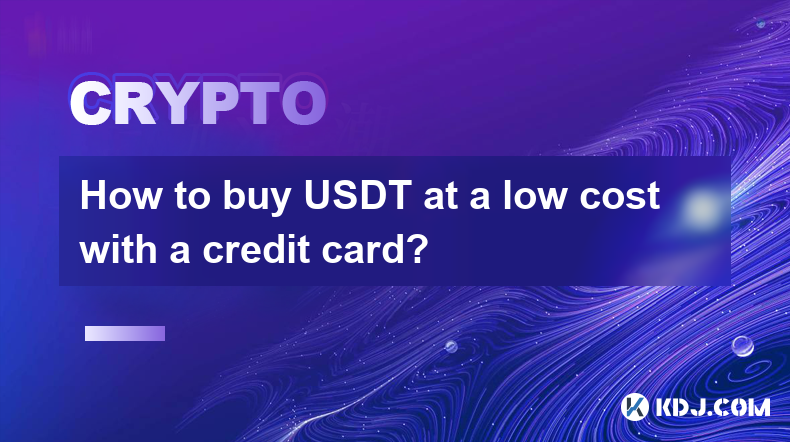
How to buy USDT at a low cost with a credit card?
Mar 28,2025 at 12:14am
Understanding the Challenges and OpportunitiesBuying USDT, a stablecoin pegged to the US dollar, using a credit card presents unique challenges. Credit card companies often levy significant fees for cryptocurrency purchases, classifying them as cash advances. These fees can significantly inflate the cost of your USDT acquisition. Furthermore, many exch...
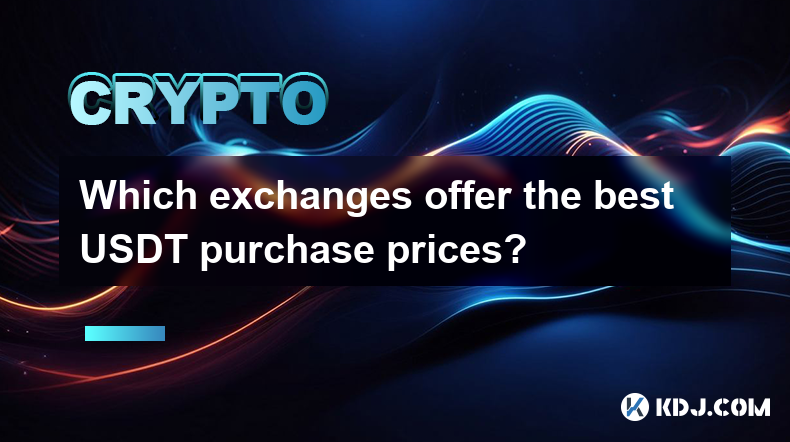
Which exchanges offer the best USDT purchase prices?
Mar 27,2025 at 09:21pm
Finding the Sweet Spot: Navigating USDT Purchase Prices Across ExchangesThe price of Tether (USDT), a stablecoin pegged to the US dollar, fluctuates slightly across different cryptocurrency exchanges. While the variations are usually minimal, understanding these differences can save you money, especially when purchasing large amounts. Several factors i...

Does the purchase of USDT support multiple payment methods? Which one is the most cost-effective?
Mar 28,2025 at 04:56pm
Exploring USDT Purchase Options and CostsThe purchase of Tether (USDT), a popular stablecoin pegged to the US dollar, offers various payment methods, each with its own associated costs and benefits. The availability of specific methods depends heavily on the exchange or platform you choose. There's no single 'best' method, as cost-effectiveness is rela...

How to get USDT at a low price through arbitrage trading?
Mar 27,2025 at 08:14pm
Understanding Arbitrage Trading for USDTArbitrage trading exploits price discrepancies of the same asset across different exchanges. In the context of USDT (Tether), this means buying USDT on one exchange where it's cheaper and selling it on another where it's more expensive, profiting from the difference. This requires speed, efficiency, and access to...

How to buy USDT at a low price through block trading?
Mar 28,2025 at 03:09am
Understanding Block Trading and USDTBlock trading, in the context of cryptocurrencies, refers to the purchase or sale of a large quantity of a digital asset in a single transaction. This contrasts with smaller, individual trades executed on public order books. USDT, or Tether, is a stablecoin pegged to the US dollar, aiming for a 1:1 ratio. Buying USDT...

How to avoid exchange rate losses when buying USDT?
Mar 28,2025 at 07:43pm
Understanding USDT and Exchange Rate FluctuationsTether (USDT) is a stablecoin pegged to the US dollar. Ideally, 1 USDT should always equal $1. However, in reality, its price can fluctuate slightly due to various market forces. These fluctuations, even if minor, can lead to losses if you're not careful when buying USDT. Understanding these potential fl...

How to buy USDT at a low cost with a credit card?
Mar 28,2025 at 12:14am
Understanding the Challenges and OpportunitiesBuying USDT, a stablecoin pegged to the US dollar, using a credit card presents unique challenges. Credit card companies often levy significant fees for cryptocurrency purchases, classifying them as cash advances. These fees can significantly inflate the cost of your USDT acquisition. Furthermore, many exch...

Which exchanges offer the best USDT purchase prices?
Mar 27,2025 at 09:21pm
Finding the Sweet Spot: Navigating USDT Purchase Prices Across ExchangesThe price of Tether (USDT), a stablecoin pegged to the US dollar, fluctuates slightly across different cryptocurrency exchanges. While the variations are usually minimal, understanding these differences can save you money, especially when purchasing large amounts. Several factors i...
See all articles






















































































